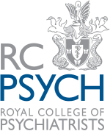Delayed sleep-wake phase disorder (DSWPD) is a circadian rhythm sleep disorder characterised by a significant delay in the timing of sleep onset and wake times. Individuals with DSWPD typically experience chronic difficulty falling asleep before very late hours, often between 2 a.m. and 6 a.m. and have considerable trouble waking up in the morning, which frequently interferes with daily responsibilities such as work, education, and social commitments. It’s important to understand that DSWPD is not simply a preference for staying up late; it’s a recognised medical condition that can significantly impact one’s quality of life, relationships, and overall well-being. This article will explore the symptoms, causes, and available guidance for effective management of delayed sleep phase disorder.
Understanding delayed sleep phase disorder
Delayed sleep-wake phase disorder is a chronic condition where an individual’s internal body clock (circadian rhythm) is significantly misaligned with conventional societal schedules. While most people naturally begin to feel sleepy in the evening and wake refreshed in the morning, those with DSWPD experience a consistent pattern of delayed sleep timing that conflicts with standard social expectations and schedules.
Despite having difficulty falling asleep at conventional times, individuals with DSWPD typically experience normal sleep quality and duration when allowed to follow their natural sleep patterns. For example, someone with DSWPD might naturally fall asleep at 3 am and wake at 11 a.m., experiencing a full eight hours of restorative sleep. The problem arises when they’re required to adhere to a more traditional schedule, such as a 9 a.m. work start time or early morning classes.
DSWPD often emerges during adolescence, a time when biological changes naturally push sleep schedules later and can persist into adulthood. Without proper recognition and management, this condition can lead to chronic sleep deprivation and its associated consequences. It’s important to note that DSWPD differs from insomnia; the primary issue isn’t an inability to sleep, but rather the timing of the sleep period relative to societal norms.
Symptoms of delayed sleep phase disorder
The hallmark symptom of DSWPD is the persistent inability to fall asleep at conventional bedtimes, regardless of how tired the person feels. Individuals with this disorder often find themselves lying awake until the early morning hours, sometimes as late as 6 a.m., despite attempts to go to bed earlier. This delayed sleep onset is followed by extreme difficulty waking at desired morning times, even with multiple alarms or external assistance. When forced to wake earlier than their natural rhythm allows, people with DSWPD experience excessive daytime sleepiness, headache, depression, fatigue, reduced alertness, and difficulty concentrating. This chronic sleep deprivation can manifest as irritability, mood disturbances, and reduced cognitive performance. Many report feeling “foggy-headed” or operating at diminished capacity throughout the morning hours, with peak alertness often not occurring until late afternoon or evening.
These symptoms can have profound effects on daily functioning. It negatively impacts students’ school performance and friendships, and working adults might face challenges maintaining employment that requires early start times. Social isolation can also occur when an individual’s peak waking hours don’t align with those of family and friends.
Notably, when individuals with DSWPD are allowed to follow their naturally delayed sleep schedule, such as during vacations or while working flexible hours, they typically sleep well and wake feeling refreshed. This characteristic pattern helps distinguish DSWPD from other sleep disorders that impair sleep quality regardless of timing.
Causes and risk factors of delayed sleep phase disorder
The development of DSWPD involves a complex interaction of genetic, environmental, and behavioural factors. Research suggests that 22% of adult biological relatives of individuals with DSWPD prefer staying up late, a rate much higher than in the general population. This indicates that DSWPD can run in families. Specific genetic variations affecting the body’s circadian rhythm have been identified in some individuals with this disorder.
Environmental influences play a significant role in either exacerbating or improving DSWPD symptoms. Excessive exposure to artificial light in the evening, particularly the blue light emitted by electronic devices, can further delay the body’s natural production of melatonin, making it harder to fall asleep. Conversely, insufficient exposure to morning sunlight fails to provide the crucial light cues needed to reset the circadian clock, worsening the condition.
DSWPD shows a marked prevalence among adolescents and young adults, affecting approximately 7-16% of this population. This higher incidence may be partly due to developmental changes in circadian rhythms during puberty, which naturally shift sleep timing later. Additionally, there appears to be a connection between DSWPD and certain mental health conditions, particularly depression, anxiety, and attention deficit hyperactivity disorder (ADHD), although the directional relationship remains under investigation.
Diagnosis and assessment of delayed sleep-wake phase disorder
Diagnosing delayed sleep-wake phase disorder involves a thorough clinical evaluation by a healthcare professional with expertise in sleep medicine. The process typically begins with an in-depth review of the patient’s sleep history, focusing on habitual sleep and wake times, difficulties adjusting sleep schedules, and how these patterns affect daily activities and functioning.
An essential part of the assessment is the use of sleep diaries, which the patient maintains over two to three weeks. These log and track bedtimes, wake times, perceived sleep quality, and levels of daytime alertness, revealing consistent patterns characteristic of DSWPD. To supplement subjective data, actigraphy is frequently used, a non-invasive method where the patient wears a device, typically on the wrist, that tracks movement. This tool provides objective insights into sleep-wake patterns over several days or weeks, offering a more complete picture of the individual’s circadian rhythm and sleep behaviour.
In some cases, polysomnography (an overnight sleep study) might be recommended to rule out other conditions that mimic DSWPD, including sleep apnoea or periodic limb movement disorder. Additionally, the dim light melatonin onset (DLMO) test can offer precise information by identifying when melatonin production begins in the evening, confirming whether the individual’s internal clock is indeed delayed.
A careful differential diagnosis is crucial, as DSWPD symptoms can overlap with those of other conditions like depression, chronic insomnia, or poor sleep hygiene. What sets DSWPD apart is the significant improvement in sleep quality when individuals are allowed to follow their naturally delayed sleep schedule, in contrast to other disorders where sleep remains disrupted regardless of timing.
Treatment and management strategies
Managing DSWPD requires an approach tailored to the individual’s specific needs, symptom severity, and lifestyle.
Light therapy
One of the primary treatments is light therapy, which involves exposure to bright light (typically 10,000 lux) shortly after waking in the morning. This exposure helps the circadian rhythm by suppressing melatonin production and signalling wakefulness to the brain. Consistent application of light therapy has been shown to shift sleep timing earlier, improving sleep onset and daytime alertness.
Melatonin supplements
Strategic use of melatonin supplements is also an important treatment for DSWPD. For DSWPD treatment, low-dose melatonin (0.5-3mg) is taken a few hours before the desired bedtime, not at bedtime itself. This timing helps to advance the circadian rhythm rather than simply inducing drowsiness.
Behavioural interventions
Behavioural interventions play a crucial supporting role in management. These include maintaining good sleep hygiene practices such as consistent sleep-wake times (even on weekends), creating a sleep-conducive environment, limiting caffeine and alcohol, and establishing a relaxing pre-sleep routine. For some individuals, a technique called chronotherapy, which involves systematically delaying sleep and wake times by 1–2 hours each day until the desired schedule is achieved, can effectively reset the internal clock. However, this method requires strict adherence and professional supervision to prevent potential risks, such as the development of non-24-hour sleep-wake rhythm disorder.
Lifestyle accommodations
When behavioural and pharmacological approaches prove insufficient, lifestyle accommodations might become necessary. These could include seeking flexible work schedules, remote work options, or educational accommodations that allow for later start times aligned with the individual’s optimal functioning period.
Living with delayed sleep-wake phase disorder
Adapting to life with DSWPD often requires developing practical strategies to reconcile one’s biological sleep needs with societal expectations. Open communication with employers, educators, and family members about the condition can help to facilitate understanding and necessary accommodations. Many individuals find success by negotiating work schedules that start and end later.
Strategic planning is essential for individuals with DSWPD, as it allows them to schedule important activities, meetings, and appointments during the afternoon or evening hours when their alertness is at its peak. Additionally, many find it beneficial to connect with others who share similar circadian patterns, whether through online support groups or social events arranged during hours that align with their natural rhythms.
Those with DSWPD need to recognise that their sleep pattern reflects a neurobiological difference rather than a character flaw or lack of discipline. This self-acceptance, combined with practical adaptations and appropriate medical support, allows many individuals with DSWPD to lead fulfilling, productive lives aligned with their natural rhythms.
Managing delayed sleep-wake phase disorder
Delayed sleep-wake phase disorder is a real medical condition that significantly affects daily functioning, yet it often goes unrecognised in general healthcare settings. Living with DSWPD can be challenging, especially in a society built around traditional sleep and wake times. However, utilising effective treatments and management strategies can help individuals align their biological needs with social demands, making daily life more manageable. If you feel you may be struggling with general sleep issues, you may also benefit from reading our article on sleep hygiene.
If you suspect that you or someone you care about may have DSWPD, seeking evaluation from a sleep specialist is an important first step. Early intervention can prevent years of unnecessary struggle with chronic sleep deprivation and its wide-ranging consequences. Furthermore, a good night’s sleep can improve your energy levels and positively impact your wellbeing. Dr Dipesh Mistry is an expert in the diagnosis and treatment of sleep disorders, providing personalised and empathetic care to support both mental and physical wellbeing. Contact us today to start your journey towards restful nights and more energised days.










